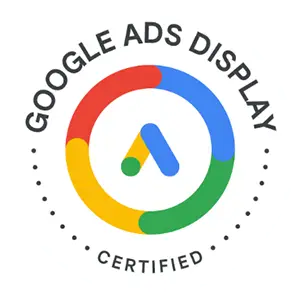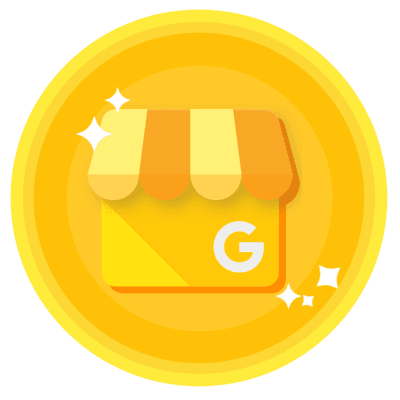Designing an ecommerce website goes beyond simply creating an attractive online shopfront. It’s about crafting an experience that is visually compelling, user-friendly, and fully functional. Achieving the right balance between aesthetics and usability is essential to utilise your website’s performance, drive conversions, and build customer loyalty.
At Active Internet Marketing (UK), we design strategies that can help optimise your ecommerce site for user engagement, SEO, and sales volume. Our expert approach focuses on turning your website into a seamless, high-converting platform that keeps customers coming back.

Small to medium-sized businesses.
User-friendly with a drag-and-drop interface.
Can handle large inventories, but costs can increase with numerous products due to transaction fees.
Various themes and apps available, though deeper customisations may require coding.
Over 4.4 million merchants use Shopify, contributing to over $400 billion in sales.

Businesses seeking flexibility and control.
Requires a WordPress site; more control over design and functionality.
Handles large inventories effectively, but site performance can depend on hosting.
Highly customisable with extensive plugins, but advanced features may require technical skills.
Powers over 28% of all online stores, making it a leading choice.

Large enterprises with complex needs.
Requires development resources; powerful customisation and scalability tools.
Excellent for extensive catalogues and high product volumes.
Deeply customisable but requires a dedicated development team for management.
Used by major brands like Coca-Cola and Ford, demonstrating its capacity for large-scale operations.

Growing businesses anticipating scaling.
User-friendly with built-in features that minimise reliance on third-party apps.
Supports unlimited products, designed for high-volume sales.
Offers decent options, but advanced features may require technical expertise.
Supports over 60,000 stores, with significant growth in the last few years.
Small businesses or creatives focused on design.
User-friendly with beautiful templates.
Suitable for smaller catalogues; struggles with high volumes.
Limited customisation compared to others; best for straightforward needs.
Hosts over 3.7 million websites, appealing to visually driven brands.

Small businesses and beginners.
Simple drag-and-drop interface; easy setup.
Good for small to medium ranges but may not support high volumes well.
Basic options; suitable for straightforward e-commerce needs.
Over 200 million users, with significant growth in e-commerce features.
Large enterprises needing extensive customisation.
Requires substantial resources and expertise.
Designed for high volumes, effectively managing large catalogues.
Highly customisable with a wide array of features.
Powers over 1,500 brands, demonstrating its capabilities for large-scale operations.
Source: Baymard Institute

Source: Adobe
To take engagement a step further, consider integrating interactive features like customisation tools or product configurators. These features not only make the experience more enjoyable but also allow customers to personalise products to their liking. By offering tailored recommendations or enabling product customisation, you can significantly increase both engagement and conversions, while collecting valuable data on customer preferences.


Source: BrightLocal
At Active Internet Marketing (UK), we encourage our clients to highlight user-generated content, such as customer testimonials and real-life product images, on their product pages. In addition to user reviews, showcasing industry awards, certifications, or media mentions can further enhance your site’s authority. For example, eco-friendly certifications or industry-standard badges not only serve as credibility markers but also play a role in SEO, as they can improve your site’s expertise, authoritativeness, and trustworthiness (EEAT)—key factors that Google evaluates when ranking sites.
Your ecommerce site should be designed to convert visitors into customers. Clear, visible calls to action (CTAs) are essential for guiding users through their buying journey. Whether it’s a “Shop Now,” “Add to Cart,” or “Proceed to Checkout” button, your CTAs should be easy to find and lead users smoothly towards completing a transaction.
An often overlooked but crucial component of e-commerce design is the checkout process. A complicated or lengthy checkout can lead to abandoned carts. Simplify the process by reducing the number of steps required to make a purchase, offering a range of payment options, and making sure your checkout feels secure. Providing well-known payment methods such as PayPal, Apple Pay, and credit cards ensures customers can pay using their preferred methods. A smooth, efficient checkout process not only increases conversions but also signals to Google that your site offers a good user experience, which can positively impact your SEO.
Brand consistency is key to building recognition and trust. Your ecommerce site should reflect a cohesive visual identity that aligns with your marketing messages across all channels. This includes consistency in design elements like colours, fonts, and imagery, whether customers are interacting with your website, email campaigns, or social media profiles.
Having a uniform brand presence across multiple touchpoints ensures that customers recognise your business and feel confident in their interactions with you. Consistency also contributes to a seamless user experience, making it easier for customers to navigate your website, engage with your content, and make purchases. This helps to build long-term customer loyalty and improves overall engagement, which is beneficial for both your brand and your SEO performance.

At Active Internet Marketing (UK), we specialise in creating e-commerce websites that not only look great but perform at their best.
We understand that success in online retail isn’t just about having an attractive website—it’s about crafting a strategic, user-focused experience that drives conversions and strengthens customer relationships.
Whether you’re looking to optimise your site for SEO, improve user experience, or boost sales, our team is here to help you achieve your goals.
From building trust through thoughtful design to optimising your checkout process for better conversions, we provide expert e-commerce web design services that put your business on the path to success.
If you are running a business with a relatively extensive catalogue of items or products, then yes, absolutely, you will want a form of eCommerce web design for your website.
These can come in many forms with ranging attributes, costs, add-ons, and bespoke specifications, so if you are not 100% certain about what you need, then give us a call!
There are a range of factors affecting the costs of your eCommerce software including: your platform choice, whether you choose custom vs. template designs, bespoke features that your business may need, your plugin integrations, and the level of scalability you think your store may need.
Well, hopefully, the information above has provided some clarity to what content may be needed and why as well as which platforms may be best suited to your business goals. As always if you have any further eCommerce related queries then dont hesitate to contact us.
The user experience (UX) on an e-commerce website can be very easy — if the design is done well. What makes it easy:
Put simply, the 4 key elements of great e-commerce web design are:
1. Easy Navigation
Clear menus, categories, and filters help shoppers find what they’re looking for quickly.
2. High-Quality Visuals
Good product images and videos build trust and help buyers feel confident.
3. Simple Checkout Process
Fast, easy, and secure checkout = more sales. Fewer steps, better results.
4. Mobile-Friendly Design
Most people shop on phones, so your site needs to work perfectly on all screen sizes.
An e-commerce website is a site where people can buy and sell products or services online. What makes it e-commerce:
A regular website shares information, whilst an E-commerce website lets people buy things online.
A good e-commerce website design is clean, easy to use, and helps people buy quickly and confidently. The key features of good e-commerce design:
Yes, you can build an e-commerce website on your own — even without coding skills. The tools that make it easy:
Yes, e-commerce web design is worth it if you want to sell online.
It helps you:
Look professional
Get more sales
Work well on phones
Show up on Google



